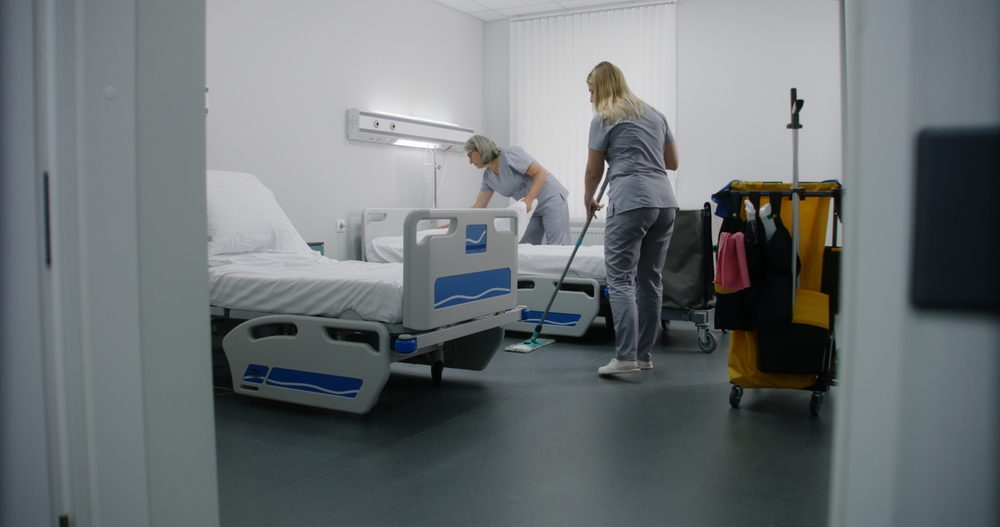The Importance of Medical Centre Cleaning: Ensuring Safety and Hygiene
Maintaining a clean and sanitary environment in medical centres is paramount to safeguarding the health and well-being of patients, staff, and visitors. From exam rooms to waiting areas, proper cleaning and disinfection protocols play a crucial role in preventing the spread of infections and promoting a safe healthcare setting. In this guide, we’ll explore the importance of medical centre cleaning and the essential steps involved in ensuring cleanliness and hygiene.
Infection Control
Medical centres are high-traffic environments where infectious pathogens can easily spread. Proper cleaning and disinfection protocols help mitigate the risk of cross-contamination and healthcare-associated infections (HAIs). Thorough cleaning of frequently touched surfaces, such as doorknobs, countertops, and medical equipment, is essential for preventing the transmission of bacteria and viruses.
Compliance with Regulations
Medical centres are subject to stringent cleanliness standards and regulations mandated by health authorities and governing bodies. Adhering to these regulations is essential for maintaining accreditation and ensuring the safety and well-being of patients. Professional cleaning companies must stay abreast of regulatory requirements and implement best practices to achieve compliance.
Specialized Cleaning Procedures
Cleaning medical facilities requires specialized knowledge, training, and equipment to effectively remove contaminants and pathogens. Dedicated cleaning protocols should be established for different areas within the medical centre, including patient rooms, surgical suites, laboratories, and common areas. Using hospital-grade disinfectants and following manufacturer instructions for proper application are crucial for achieving thorough disinfection.
Protection of Vulnerable Populations
Medical centres serve a diverse patient population, including individuals with compromised immune systems and underlying health conditions. Maintaining a clean and sterile environment is essential for protecting vulnerable patients from exposure to harmful pathogens. Regular cleaning and disinfection help reduce the risk of healthcare-associated infections and promote patient safety and recovery.
Enhanced Air Quality
Indoor air quality is a critical aspect of maintaining a healthy medical environment. Dust, allergens, and airborne pathogens can exacerbate respiratory conditions and compromise patient health. Implementing regular cleaning and air filtration measures helps improve air quality, creating a safer and more comfortable environment for patients and staff.
Emergency Preparedness
Medical centres must be prepared to respond to infectious disease outbreaks and public health emergencies. Establishing robust cleaning and disinfection protocols is essential for mitigating the spread of infectious pathogens during crisis situations. Professional cleaning companies play a vital role in supporting medical centres’ emergency preparedness efforts by providing prompt and thorough cleaning services.
In conclusion, medical centre cleaning is essential for ensuring safety, hygiene, and compliance with regulatory standards. Our commercial cleaning in Blacktown and other parts of Sydney a critical role in maintaining clean and sterile environments that promote patient health and well-being. By implementing rigorous cleaning and disinfection protocols, medical centres can uphold the highest standards of cleanliness and protect the health of patients, staff, and visitors.
Information Disclaimer
The content of this article is meant for informational purposes only and should not be considered a source of professional advice, recommendations, or endorsements. It is not a substitute for seeking expert guidance or making well-informed decisions based on individual circumstances. Although we strive for accuracy and reliability, we cannot guarantee the information's completeness or suitability for all situations. Readers are urged to verify facts, consult experts, and consider their own context before taking actions or decisions based on this content. No warranties, explicit or implied, are provided regarding the accuracy, timeliness, or completeness of the presented information. Relying on this information is at the reader's own discretion and risk. We encourage readers to consult relevant professionals or experts for advice tailored to their specific needs. Neither the author, publisher, nor any affiliated parties will be held responsible for errors, omissions, or damages resulting from the use or reliance on the information in this article.

